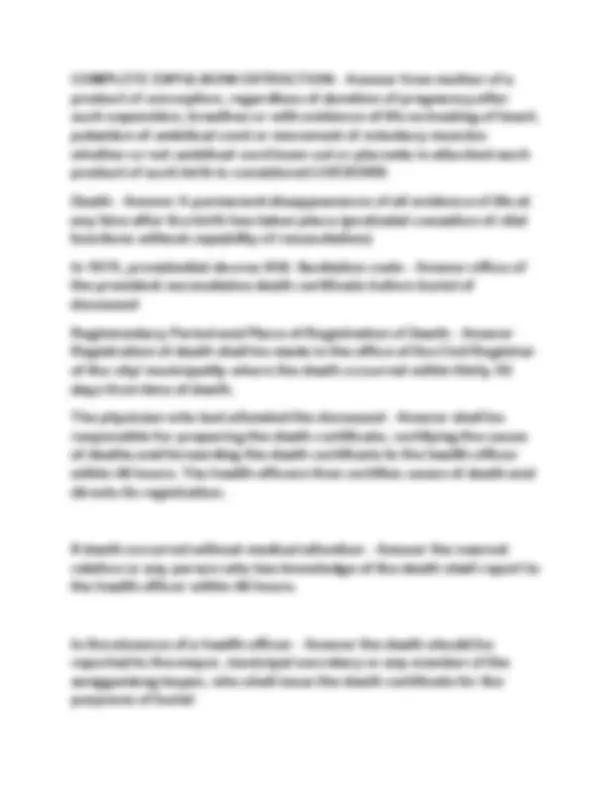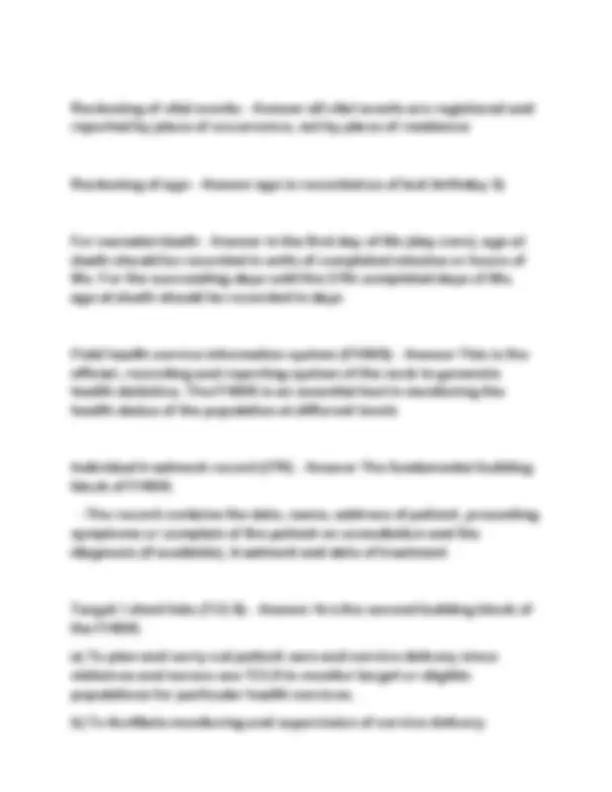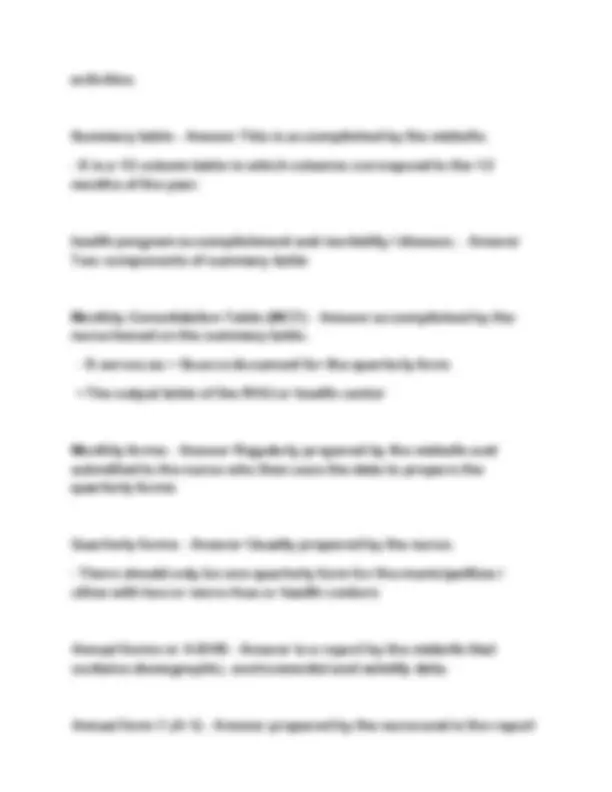





Study with the several resources on Docsity

Earn points by helping other students or get them with a premium plan


Prepare for your exams
Study with the several resources on Docsity

Earn points to download
Earn points by helping other students or get them with a premium plan
Community
Ask the community for help and clear up your study doubts
Discover the best universities in your country according to Docsity users
Free resources
Download our free guides on studying techniques, anxiety management strategies, and thesis advice from Docsity tutors
A comprehensive overview of community health assessment tools and methods, including various data collection techniques, legal frameworks, and reporting systems. It presents a series of exam questions and answers related to these topics, making it a valuable resource for students and professionals in public health and community nursing.
Typology: Exams
1 / 7

This page cannot be seen from the preview
Don't miss anything!




Community health assessment tools - Answer The community health nursing process emphasizes the active involvement of the clients in its care. In collecting data, different methods may be utilized to generate health data.
Ocular survey or windshield survey - Answer This involves rapid observation of a community and performed either by walking through it, driving or riding in a vehicle
Participant observation - Answer For: community organizing and participatory research
Formal - Answer community activities are barangay assemblies, school parent teacher meeting, church meeting.
Informal - Answer gatherings are in variety of setting such as sari-sari store, community recreation area or schools.
Survey - Answer A made of series of questions for systematic collection of information from a sample of individuals or families in a community
Informant interview - Answer A purposeful talk with either key informant or ordinary members of the community.
Key informant - Answer consists of formal and informal community leaders or persons of position and leaders or persons of position and influence, such as leaders in local government, schools and business
Structured - Answer is where the nurse directs the talk based on an interview guide.
Unstructured - Answer is where the informant guides the talk.
Community forum - Answer Is an open meeting of the members of the community.
Focus group - Answer Membership is more homogeneous (specific group) which is person with similar sociocultural or health conditions
Act 3753 (civil registration law, Philippine legislature) - Answer Enacted in 1930, established the civil registry system in the Philippines and requires the registration of vital events such as births, marriages and deaths
Ra 7160 (local government code) - Answer Assigned the function of civil registration to local governments and mandated the appointment of local (city / municipal).
Civil registrars.
NSO (National Statistics Office) - Answer Serves as the central repository of civil registries and the NSO administrative and the civil registrar general of the Philippines. - Reliable civil registration and vital statistics
facility administrator - Answer The responsible for the registration of the event in facility-based birth
physician, nurse, midwife or anybody who attended the delivery - Answer have the responsibility for registering births that occur outside a facility.
-Either parent may also register the birth.
local civil registry office of city or municipality - Answer The birth of a child should be registered within 30 days from the occurrence of the birth
Reckoning of vital events - Answer all vital events are registered and reported by place of occurrence, not by place of residence
Reckoning of age - Answer age is recorded as of last birthday 3)
For neonatal death - Answer in the first day of life (day zero), age at death should be recorded in units of completed minutes or hours of life. For the succeeding days until the 27th completed days of life, age at death should be recorded in days
Field health service information system (FHSIS) - Answer This is the official, recording and reporting system of the nscb to generate health statistics. The FHSIS is an essential tool in monitoring the health status of the population at different levels
Individual treatment record (ITR) - Answer The fundamental building block of FHSIS.
Target / client lists (TCLS) - Answer Are the second building block of the FHSIS.
a) To plan and carry out patient care and service delivery since midwives and nurses use TCLS to monitor target or eligible populations for particular health services.
b) To facilitate monitoring and supervision of service delivery
activities.
Summary table - Answer This is accomplished by the midwife.
health program accomplishment and morbidity / disease. - Answer Two components of summary table
Monthly Consolidation Table (MCT) - Answer accomplished by the nurse based on the summary table.
Monthly forms - Answer Regularly prepared by the midwife and submitted to the nurse who then uses the data to prepare the quarterly forms
Quarterly forms - Answer Usually prepared by the nurse.
Annual forms or A-BHS - Answer is a report by the midwife that contains demographic, environmental and natality data.
Annual form 1 (A-1) - Answer prepared by the nurse and is the report
policymaking and coordinating body of the PSS.
National Statistics Office (NSO) - Answer is the PSS arm that generates general- purpose statistics: population, employment, process, and family income/ expenditures
De jure - Answer assignment is based on the legally established place of residence of people
-NSO conducts the national census using this method
De facto - Answer is according to the actual is according to the actual physical location of people